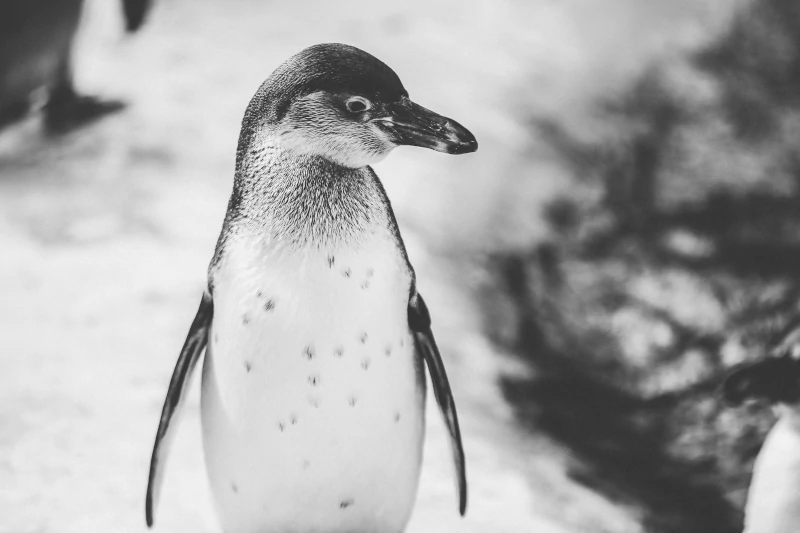
The Fascinating World of Penguins: A Comprehensive Guide
Penguins, the flightless birds native to the Southern Hemisphere, have become a beloved and iconic species with their distinctive black and white tuxedo-like markings and amusing waddling gait. However, these fascinating creatures possess more intricacies than what may meet the eye. The Southern Hemisphere’s darling creatures have long been adored for their charismatic personality, yet their true character remains a mystery.
Adaptations to Survive Extreme Environments
Penguins have evolved unique features to survive both in the water and on land. Penguins have a special layer of fat under their skin called “blubber” that keeps them warm in the freezing cold water of the Southern Ocean. They also have tight and thick feathers that keep the cold water from touching their skin. Their body shape is like a torpedo which makes them really fast and agile swimmers. They also have flipper-like wings that help them move smoothly through the water. On land, their webbed feet provide stability on the slippery ice, while their huddling behavior maintains warmth in the harsh, icy climate.
Habitat and Distribution
Penguins exclusively inhabit the Southern Hemisphere, with the exception of the Galapagos penguin found near the Equator. The main habitat of Penguins is Antarctica. Yet they live in South Africa, South America, New Zealand, and Australia. In total, there are 18 distinct penguin species have been identified, each with unique characteristics and adaptations to survive in their environment.
Feeding Habits
Penguins are carnivorous and primarily feed on fish, krill, and squid. They have great swimming and diving skills. Some species of penguins are able to dive as deep as 500 meters to catch their prey. Their beaks are specially adapted to secure slippery prey, while spines lining their stomachs facilitate digestion.
Unique Social Behaviors
Penguins exhibit intriguing social behaviors, with many species mating for life and engaging in intricate courtship rituals to strengthen their bonds. Additionally, they possess a complex social hierarchy, with dominant birds often displaying aggression to establish their place in the hierarchy.
Conservation Efforts
Despite their widespread popularity, penguins face significant threats to their survival. Climate change, overfishing, and pollution endanger penguin populations globally. Nonetheless, conservation initiatives are underway to safeguard their habitats and secure the future of these extraordinary birds.
In conclusion, penguins are an extraordinary species, adapting to endure the harshest of environments and exhibiting intriguing social behaviors. Climate change and environmental degradation put them in great danger of extinct. So it is crucial to continue conservation efforts to protect these remarkable creatures and ensure their survival on earth.
FAQs:
What kind of animal is a penguin?
A penguin is a flightless aquatic bird that is native to the Southern Hemisphere, particularly in Antarctica.
How many species of penguins are there?
There are 18 species of penguins.
Do penguins have any natural predators?
Yes, some species of penguins are preyed upon by seals, sea lions, and other large predators.
Can penguins fly?
No, penguins are flightless birds.
Are penguins birds or mammals?
Penguins are birds, not mammals. Despite some physical similarities to mammals, such as their warm-bloodedness and ability to nurse their young with a form of milk, they possess all the characteristics of birds, including feathers, wings, and a beak. Like all birds, they also lay eggs to reproduce. While penguins may look different from many other bird species due to their aquatic adaptations, they are still classified as birds within the animal kingdom.
Is penguin a smart animal?
Penguins are considered to be intelligent animals, particularly when it comes to their ability to adapt to and survive in harsh environments. They have been observed exhibiting complex behaviors such as using tools, communicating with each other through vocalizations and body language, and working together to solve problems. In addition, some species of penguins, such as the emperor penguin, have been found to have large brains relative to their body size, which may be related to their ability to navigate and survive in their often-challenging habitats. While penguins may not be as well-known for their intelligence as some other animals, they are still considered to be fascinating and complex species.
Are penguins friendly animals?
While penguins are not typically aggressive toward humans, they are wild animals and should be treated with caution and respect. In general, penguins tend to be more curious than friendly and may approach humans out of curiosity rather than a desire for social interaction. In some cases, human interaction with penguins can have negative effects on their behavior and health, so it’s important to observe them from a safe distance and avoid disrupting their natural behavior. Overall, while penguins may be fascinating to watch and observe, it’s important to remember that they are wild animals that should be appreciated from a respectful distance.
What does a penguin eat?
Penguins are carnivorous and primarily eat fish and other small aquatic animals such as squid and krill. The exact diet of a penguin can vary depending on the species, location, and time of year, but in general, they are adapted to catching and consuming prey in cold, oceanic environments. Penguins have specialized beaks and tongues that allow them to catch and swallow their prey whole or in large pieces, and they are also able to dive to great depths to catch fish and other prey.
